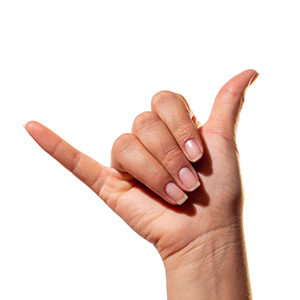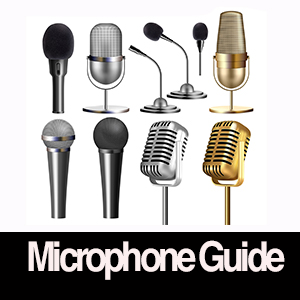How to Use a Microphone When Singing | Successful Singing

How to use a microphone when singing. While most people know that a microphone can amplify their voice when plugged into a sound system, not everyone knows how to use a microphone correctly.
A microphone works by converting the sound waves from your voice into an electrical signal. This signal then goes into the sound system or device, where it can be amplified or recorded. A microphone cannot not work without being connected to another device.
There are many different types and brands of microphone on the market, but we are going to concentrate on the most usual type that singers use – the dynamic mic.

Does a microphone make you sing better?
No. Remember a microphone basically converts your voice into an electric signal for amplification or recording. If you got bad singing techniques or you sing a bum note, the microphone will amplify or record it in all its glory.
Do you have to sing differently when using a microphone?
No. Sing like you would if you were not using a microphone. However, using good mic technique can help improve the overall sound. See below.

How do you hold it?
Hold the stem of the microphone with one hand and keep your hands free from the bulb end. You want the microphone to pick up your voice, so hold it just below your lips so that your voice surrounds the sides and the top of the microphone.

What if the microphone is on a stand?
Then you don’t need to worry about holding it, although the same mic technique applies with regards to keeping a clear, concise sound.
Mic stands are usually height adjustable, with telescopic fittings that you can unscrew and adjust before screwing them back into your preferred position. The height of the stand would ideally have the mic sitting just under your mouth.
The mic sits in a fitting which points the microphone towards you. These fittings generally allow quick release of the mic, should you wish to hold it.
Practice using a mic stand, as well as without, to see which you prefer
How far should you hold a microphone away from your mouth?
Generally, you want to hold the microphone about 6-12 inches away from your mouth. If you were to extend your thumb and your little finger on your hand, that’s roughly about the distance between your lips and the top of the microphone
However, mic technique comes into play here, which is explained further below.


Keep the microphone within the pick-up pattern
Unless you are engaging mic technique for high or loud notes, you want to keep your microphone as near to your mouth as you can. Mic’s have an optimum pick-up range, different for each model, where it can detect the pressure of the sound waves coming from your voice.
If, when singing, you turn your head, you will need to move your arm which is holding the mic too, keeping it in front of your face. This will prevent your voice from dropping in and out of the pick-up pattern, keeping your sound consistent.
.
Mic Technique
Mic technique can enhance the sound quality of the performance. Simply put, a microphone converts your voice (soundwaves) into an electrical signal, where it can be manipulated for amplification or recording purposes.
Sound is measured in terms of frequency and amplitude.

Frequency
The higher the note you sing, the higher the frequency, and likewise for the lower notes, the lower the frequency. Higher frequencies are heard more clearly than lower frequencies. That is why you can hear the tiny triangle being played above a 100 piece orchestra.
Amplification
The louder you sing, the louder and stronger the signal is going to get to the amplifier, leading to the possibility of the sound getting distorted.
The quieter you sing, then there’s less signal going to the amplifier, meaning you may not get heard.

Dynamics
Dynamics are an important feature of music and singing. It adds to the texture to the piece or the song. Your song probably has lots of different parts which are softer or call for more power. Be aware of what it is you are singing, and then use this knowledge to your advantage when using a microphone to keep the sound consistent.

The proximity effect
This is the increased bass response that occurs when a microphone is placed close to a sound source. Essentially this means your voice can sound more bassy as you get closer to them. Singers can use this to their advantage when singing lower volumes or softer notes.
Kiss (Eat) the mic
Bring the microphone closer towards your mouth when you sing quieter. This will enhance the softer side of your voice and bring out the emotion you want to convey. Whispers will be heard, but practice so that your sound doesn’t get muffled.


Pull the mic away
The same applies when singing higher and louder notes of a song, move the microphone away from your voice. Out of the main pick-up range. The microphone will still pick up your voice, but the signal is less likely to become distorted or deafening when amplified.
Practice using a microphone
The best way to feel comfortable with holding a microphone is to practice using it as often as possible. Get used to the feeling of the mic in your hand and how to grip it properly. It doesn’t have to be plugged in for this
Once you are comfortable with holding it, plug it into a sound system or computer.
It takes some getting used to hearing your voice coming through the speakers
Once you get familiar with hearing your amplified voice, then you want to practice as much as possible with the microphone on to enhance your overall sound. Practice singing at different volumes and dynamics, holding distance to get the best sound from your mic.


Mic Not Working?
is it switched on? Is is plugged in? Check the lead or the batteries. Check the volume. Mic’s are generally hardy things, however:
Don’t drop the mic!
Microphones have a very sensitive membrane (known as a diaphragm) inside the capsule. Unscrew the head of the mic and you’ll see it with some wires attached to it. Sound waves put pressure onto this membrane and converts the sound into an electrical signal. Be gentle and try not to damage it.


Feedback
Feedback is that high pitched squeal. It occurs when the microphone picks up the sound from the speakers (or monitors) and then amplifies it again (and again). This can happen in the microphone is too close to the speakers, or if the microphone gain is turned up too high.
If you get feedback check your gain levels or position yourself further away from the speakers.
Word of advice. Never point the microphone directly at the speaker. It’s guaranteed to squeal (LOUDLY).
Pop Shields
A pop shield is a device that helps to reduce or eliminate plosives (p-pops) when recording vocals. Plosives are caused by air being expelled from the mouth and hitting the microphone, resulting in a “popping” sound
Try holding your hand in front of your mouth and say the consonant ‘P’ over and over. You will feel your breath hitting your hand in strong waves
The Pop shields help to diffuse the air before it reaches the microphone, resulting in a cleaner recording.
You can also see them as hats/socks worn over the head of the microphone.


There are many different brands of dynamic microphones on the market, each with their own frequency ranges. Try out as many as you possibly can, as what suits one voice may not suit another.
Thanks for reading


